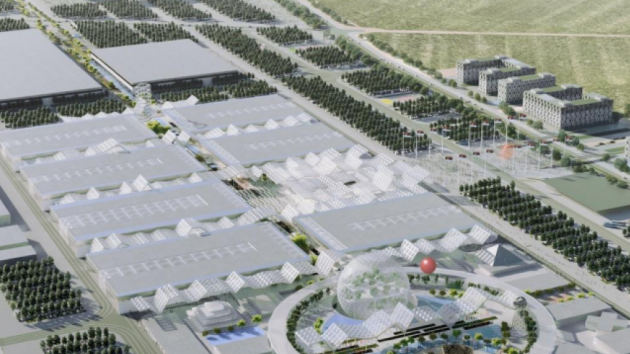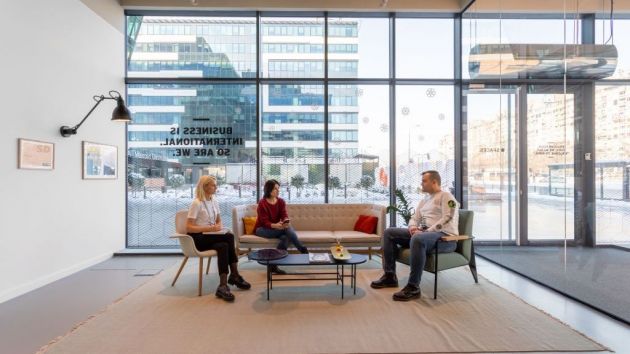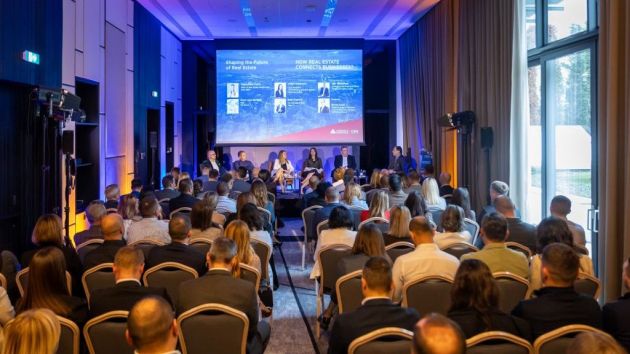Rebec 2024: Wearing shorts and flip-flops to the office, then a yoga class between the meetings
Source: eKapija
 Sunday, 16.06.2024.
Sunday, 16.06.2024.
 11:49
11:49
 Sunday, 16.06.2024.
Sunday, 16.06.2024.
 11:49
11:49
(Photo: Unsplash/Proxyclick Visitor Management System)

Belgrade has 40 coworking spaces
Bojan Jevtic, the founder of Avalon Real Estate, reminded that Belgrade offered 1.2 million square meters of office space and that a further growth was expected.
– In Belgrade, the percentage of vacant real estate for lease is low, around 5%. We need new investments. The truth is that we had a weaker first quarter compared to the previous year, but the market is there, I expect a further growth and that we will have enough space to meet the demands – points out Jevtic.
He notes that hybrid work has not led to a reduction of leased office space.
– Covid was an experiment in which everybody tried to work from home, but a small number of clients permanently reduced the need for office space. Some implemented flexible solutions, two days of working from home, three days from the office, but they didn’t give up on the office – notes Jevtic.
The coworking space market is growing too, reveals Acim Leon Pantic, the owner and director of We Share Space. As he says, this concept, which was new just a few years ago, attracts a lot of companies today – in Belgrade alone, there are over 40 coworking spaces, or 70,000 square meters available to clients.
– The clients have recognized the advantages of this concept, from flexibility, which means that they can grow as their business grows, which is impossible with traditional lease agreements, to practical benefits, because we provide everything, from furniture, to cleaning at the very end – says Pantelic.
He announces that the company is opening spaces in Ljubljana in September, and then later in Zagreb, Skopje and Podgorica as well.
– Zagreb has surprised us, because the percentage of vacant real estate for lease is extremely low, 1-2%, and the demand is high. There is no new construction, there is no development. We have had a situation where we picked 2-3 buildings in Zagreb, but the space disappeared three days later, which means that we have to sign the agreement immediately there, as soon as we find an adequate space – reveals Pantelic.
A yoga class at the office
Maria Romanova, the leasing manager at GTC Group Bulgaria, points out that this group has 46 commercial buildings in its portfolio with over 700,000 square meters of available space in Poland, Budapest, Bucharest, Belgrade, Zagreb and Sofia.
– We see a positive trend in Bulgaria following the pandemic, the construction has started again, the leasing is satisfactory in the past two years. The price is now EUR 17 per m2, whereas, in the time of covid, it was EUR 13-14 per m2. The clients are becoming more demanding, they want high-quality buildings with green certificates, in a prime location, with good transport connections and, if possible, a park nearby – says Romanova.
She also notes that the purpose of an office is changing.
– As renters, we are noticing that the clients are concentrated on creating an experience, in order to draw the employees to the offices. Now the office is a space for interaction, cooperation, you will find a yoga studio, a fitness room, a space for relaxation, education, play there. The employers want the workers to be satisfied, to bring the home atmosphere to the office, which is why we are not surprised by increasingly specific requests, such as the one to enable, for the employees, a day when pets are welcome – says Romanova.
Millions can be made in flip-flops too
Pantelic is also noticing the changes in the clients’ demands. As he says, the clients are looking for more focus rooms where they can have peace and make calls and have meetings in silence, as well as spaces for cooperation. Still, as he says, the hybrid model is proving to be the best, for both the employees and the companies.
– The pandemic helped our business model, due to the lowering of the need for office space, but that was in the short term. As soon as the main restrictions were lifted, people immediately returned to the offices. It is only IT companies that have a problem bringing back the employees to the office, whereas others have one or, at most, two days of working from home – notes Pantelic.
He also notices differences in demands between younger and older clients.
– The main difference is in the physical appearance. The younger ones are more relaxed, they want to come to the office in shorts and flip-flops. We recently had a client who had strict demands in that sense, that the employees could come to work dressed informally, but the owner refused, due to the rules of the building – he notes.
Also, the technology changes everything, notes Pantelic.
– We have clients of 22-23 years of age with companies with 100 employees. They don’t work as it used to be the case before, there are no phones, emails, it’s all communication through a chat. That indicates to me that a new generation is coming and that we have to adapt – Pantelic is categorical.
The technology also influences the demand for certain professions.
– We used to have a big problem with architects when it came to the time they needed to respond to the clients’ demands. There are artists, they need time, and we are business-oriented, and there were always misunderstandings there. Artificial intelligence has helped us a lot with that, in those initial negotiations with the clients, when they tell us what they want the space to look like, how big the rooms should be. We now have excellent software which helps us with that. And of course, we still need architects, they haven’t been replaced by AI, but the software helps us make that first step – reveals Pantelic.
ESG trend – A green building beats both the location and the size
The participants in the panel agreed that, in the future, in this sector as well, the ESG trend, which is already now influencing companies’ decisions, will be increasingly present.
– We had a big British company last year, which had a choice between a building without a green certificate and which was not in line with the ESG standards and the other one, which had all those things. They decided to sacrifice both the size and other benefits in order to get a facility in line with the ESG standards, because that has an impact on their relations with investors and the possibility of applying for funds in the next round. This will probably happen more frequently, ESG has become a trend worldwide and we are following it with increasing frequency – concludes Jevtic.
M. Dedic
Tags:
Avalon Real Estate
We Share Space
GTC Group Bulgaria
Aćim Leon Pantelić
Bojan Jevtić
Maria Romanova
Rebec 2024
ESG
green building
office space
coworking space
hybrid work
Comments
Your comment
Naš izbor
Most Important News
Full information is available only to commercial users-subscribers and it is necessary to log in.
Follow the news, tenders, grants, legal regulations and reports on our portal.
Registracija na eKapiji vam omogućava pristup potpunim informacijama i dnevnom biltenu
Naš dnevni ekonomski bilten će stizati na vašu mejl adresu krajem svakog radnog dana. Bilteni su personalizovani prema interesovanjima svakog korisnika zasebno,
uz konsultacije sa našim ekspertima.


 Izdanje Srbija
Izdanje Srbija Serbische Ausgabe
Serbische Ausgabe Izdanje BiH
Izdanje BiH Izdanje Crna Gora
Izdanje Crna Gora


 News
News
















